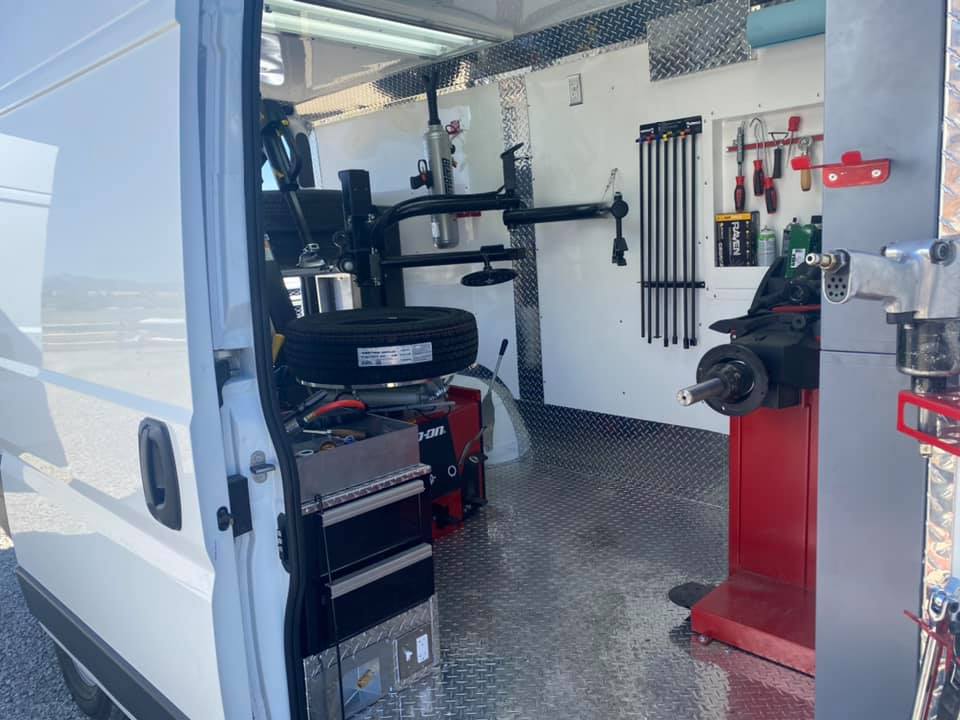Reliable Flat Tire Repair Las Vegas - Mobile Help
Tire Solution: Proven Methods for Optimum Tire Maintenance and Treatment
Maintaining optimum tire condition is extremely important for both security and efficiency of any type of lorry. From making certain proper tire stress to regular rotation and placement, there are proven approaches that can considerably expand the lifespan of your tires and improve overall driving experience. As we check out the details of tire care and upkeep, we will certainly uncover crucial guidelines that every automobile owner must stick to for the finest feasible outcomes. Let's look into the world of tire service and find the tricks to maintaining your tires in top-notch shape for the lengthy haul.
Importance of Tire Pressure
Adequate tire pressure advertises far better fuel effectiveness, as under-inflated tires can lead to raised rolling resistance, causing the engine to function tougher and consume more gas. Proper tire pressure guarantees also step wear, enhancing tire durability and conserving cash in the lengthy run by postponing the need for premature substitutes. Frequently inspecting and readjusting tire pressure, particularly previously lengthy trips, is a straightforward yet effective way to enhance car performance, prolong tire life-span, and focus on safety and security on the roadway.
Tire Turning Standards
When considering tire rotation guidelines, it is important to comprehend the value of this upkeep job in taking full advantage of tire life expectancy and keeping optimum automobile efficiency. Tire rotation includes changing the position of each tire on a car to guarantee even tread wear. Front tires often tend to put on quicker than back tires because of steering forces, making normal turning vital for well balanced wear patterns. The advised rotation pattern varies relying on whether a lorry is front-wheel, rear-wheel, all-wheel, or 4x4. Normally, tires must be turned every 5,000 to 7,500 miles, or as advised in the vehicle guidebook. Ignoring tire rotation can lead to irregular wear, influencing handling, traction, and potentially compromising lorry security. By adhering to proper turning guidelines, vehicle drivers can expand the life of their tires, improve gas performance, and improve overall driving experience. Normal rotation is a simple yet reliable maintenance practice that adds considerably to tire durability and vehicle efficiency.

Benefits of Wheel Positioning
Guaranteeing appropriate wheel placement after tire rotation is important for preserving well balanced wear patterns and making the most of automobile efficiency. Wheel placement describes the adjustment of the angles of the wheels to the producer's specs. Among the crucial advantages of wheel placement is improved steering and managing action. When the wheels are effectively straightened, it lowers guiding initiative, ensuring a smoother and more controlled driving experience. Additionally, appropriate wheel alignment helps to extend the lifespan of your tires. Misaligned wheels can cause uneven tire wear, leading to premature tire substitute and raised upkeep prices.

Tire Tread Depth Examine
Performing a routine assessment of tire step depth is important for preserving secure driving conditions and extending the life expectancy of your tires. The step on your tires plays an important duty in giving traction, especially in wet or slippery problems. To check your tire walk depth, you can utilize a step deepness scale or the penny examination. The advised tread deepness goes to least 2/32 of an inch. If the walk depth is listed below this limit, it is time to replace your tires to ensure ideal performance and safety and security when traveling. Unequal tread wear can indicate issues with tire stress, suspension, or placement, highlighting the value of routine tread deepness checks. Neglecting to check and keep appropriate walk depth can lead to lowered grasp, longer braking distances, and a raised threat of hydroplaning. By integrating tire tread deepness checks right into your routine maintenance timetable, you can drive with confidence knowing that your tires remain in leading condition.
Seasonal Tire Evaluation
Seasonal tire evaluation is a fundamental facet of tire upkeep that makes sure tires are prepared to deal with the challenges posed by various climate problems. In preparation for winter, it is essential to examine the tire stress on a regular basis as chilly temperatures can create tire stress to drop. By performing regular this content seasonal tire evaluations, drivers can lengthen tire life expectancy, enhance gas effectiveness, and most importantly, make certain a safe and secure driving experience in varying climate conditions.
Conclusion
To conclude, maintaining correct tire stress, turning tires regularly, straightening wheels correctly, keeping track of step depth, and carrying out seasonal inspections are important methods for optimum tire treatment. By complying with these confirmed techniques, chauffeurs can ensure their tires last much longer, perform check it out far better, and contribute to overall vehicle safety. It is very important to prioritize tire maintenance to stop crashes, enhance gas efficiency, and lengthen the lifespan of tires.
Ample tire stress promotes better fuel efficiency, as under-inflated tires can lead to increased rolling resistance, triggering the engine to function more challenging and eat even more fuel.When taking into consideration tire rotation standards, it is important to comprehend the value of this upkeep task in taking full advantage of tire life expectancy and keeping optimal lorry performance. Seasonal tire assessment is a fundamental facet of tire upkeep that guarantees tires are all set to deal with the difficulties positioned by different climate problems. By carrying out regular seasonal tire assessments, chauffeurs can extend tire life-span, enhance fuel performance, and most significantly, make sure a safe and secure driving experience in varying weather condition problems.
In conclusion, preserving correct tire pressure, revolving tires regularly, aligning wheels correctly, checking step depth, and performing seasonal assessments are essential methods for ideal tire care.